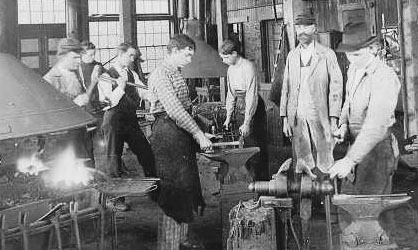Materials Science Laboratory Facilities

Metal forging laboratory of the Throop Polytechnic Institute (which later became Caltech) circa 1898.

Metal forging laboratory of the Throop Polytechnic Institute (which later became Caltech) circa 1898.